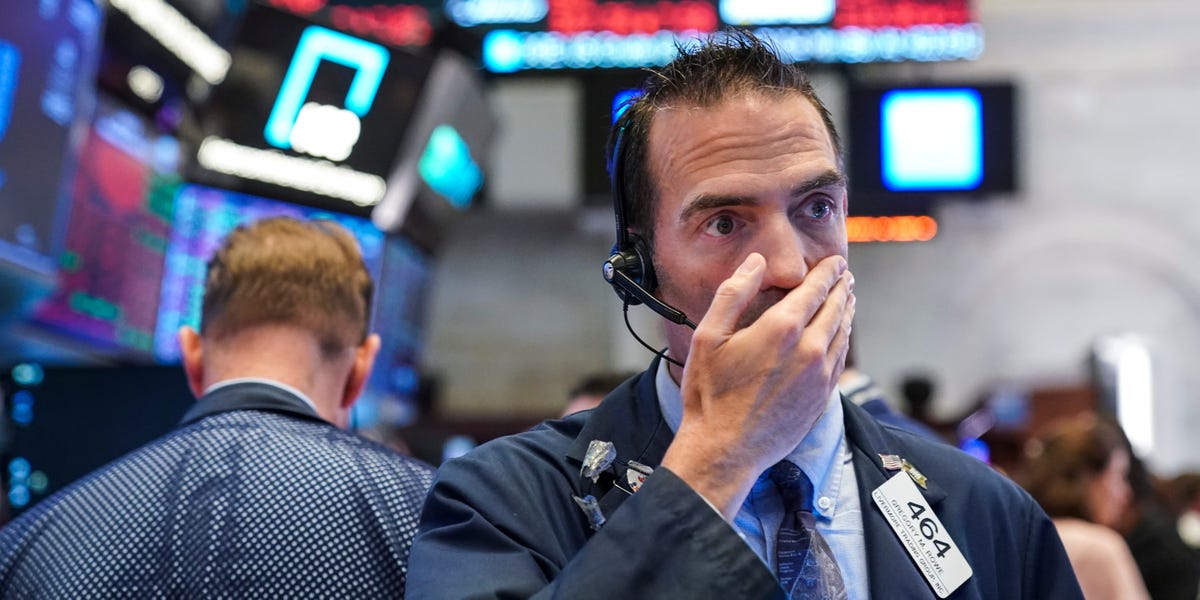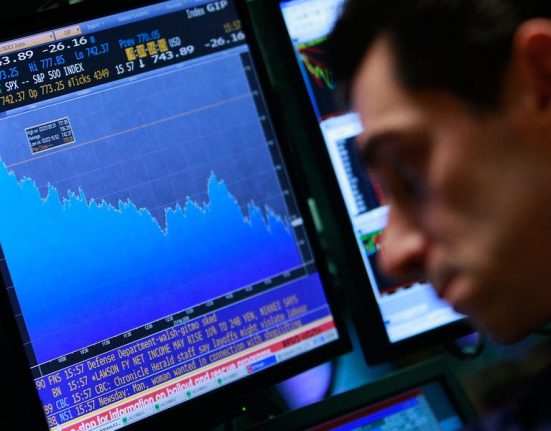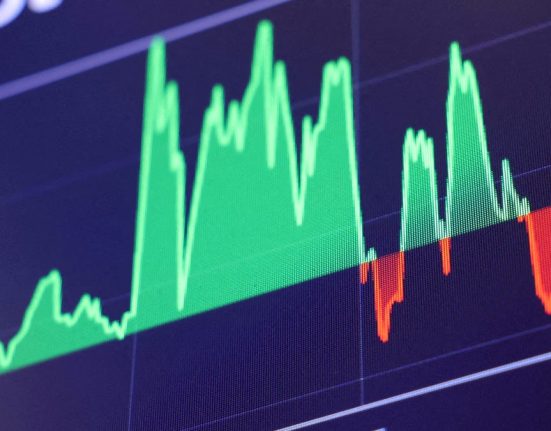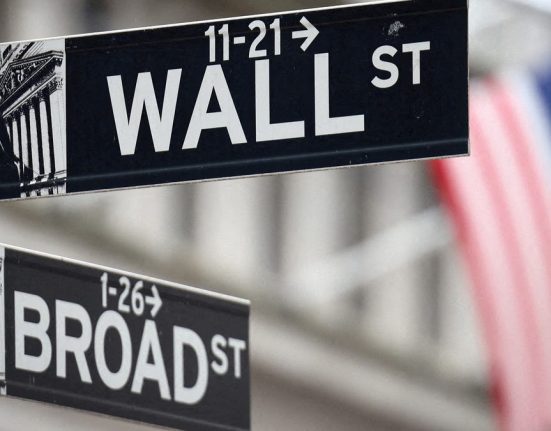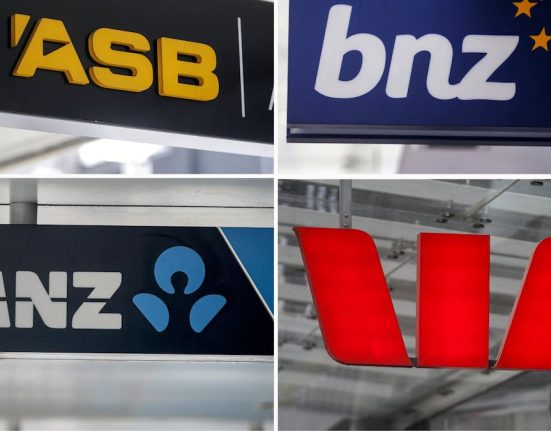Remember the inverted yield curve?
Buzz around the recession indicator, which has preceded every economic downturn since the 1960s, has died out over the last few years. As the Federal Reserve hiked interest rates in 2022, long-end Treasury rates dipped below yields on the short end, sparking fears about the economy’s health. But a recession never materialized.
While interest in the indicator has fallen, its impressive track record is still worth keeping in mind, as the curve has been inverted for much of this year. The recession that never came a couple of years ago could be now on our doorstep with the labor market starting to slow.
St. Louis Fed
“Everybody’s forgotten about the yield curve being negative for so long, inverted for so long,” Rick Cortez, a portfolio manager at Broadmark Asset Management, told BI earlier in May.
Since a heavily forecasted 2023 recession never came to fruition, investors may be more quick to dismiss fears of a downturn this time around, according to Ben McMillan, the CIO at IDX Advisors.
“That recency bias is very robust; we see it in conversations almost daily,” McMillan told BI on Thursday. “I think it’s influencing investor behavior, especially on the kind of more retail end of the spectrum.”
He continued: “We’ve talked to a lot of financial advisors that have just very candidly said they’re buying the dip for their clients.”
If a recession does arrive, stocks appear to be in a bad position, with valuations elevated. Stock valuations reflect investor expectations about earnings growth. When they climb to historically high levels, it can be a sign that investors aren’t considering downside risks, and are envisioning near-perfect future outcomes.
The Shiller cyclically adjusted price-to-earnings ratio is one popular valuation measure. It considers the current price of stocks relative to a 10-year rolling average of earnings, smoothing out earnings performance outliers.
Right now, the S&P 500’s Shiller CAPE ratio is at one of its highest levels in history.
GuruFocus
“At the moment, it’s way overvalued,” Cortez said about the S&P 500. “I mean rivaling 1929.”
The so-called Warren Buffett indicator, or the market cap of the Wilshire 5000 Index relative to GDP, is also at extreme levels, Cortez said.
GuruFocus
Of course, a recession is not guaranteed, and the economy could continue to prove resilient. There’s also a degree of uncertainty around how stocks would react to a recession since it would depend on its depth and the degree to which the Fed would lend support with rate cuts.
Que Nguyen, the CIO of Research Affiliates, said that a recession wouldn’t necessarily mean significant downside for stocks, since the S&P 500 already plummeted around 20% this year in anticipation of a recession.
“If you really look at the way markets work, the drawdown precedes the recession by 6-12 months, but it rebounds before it actually hits,” Nguyen told BI on Friday. “In fact, what happens a lot is it rallies a lot right as the recession is hitting, and the reason it rallies a lot is because the Fed is lowering rates.”
But this a unique macro cycle. President Trump’s April 2 tariffs drove recession fears, which then dissipated as he pulled back on his combative rhetoric, sparking a furious rally back toward all-time highs. With some tariffs still in place, investors are waiting to see how the import taxes impact inflation and corporate profits, and in turn the labor market.
With 61% of fund managers now pricing in a soft-landing scenario, according to Bank of America’s Fund Manager Survey published May 13, investors could be caught off guard if a downturn does come to pass.

